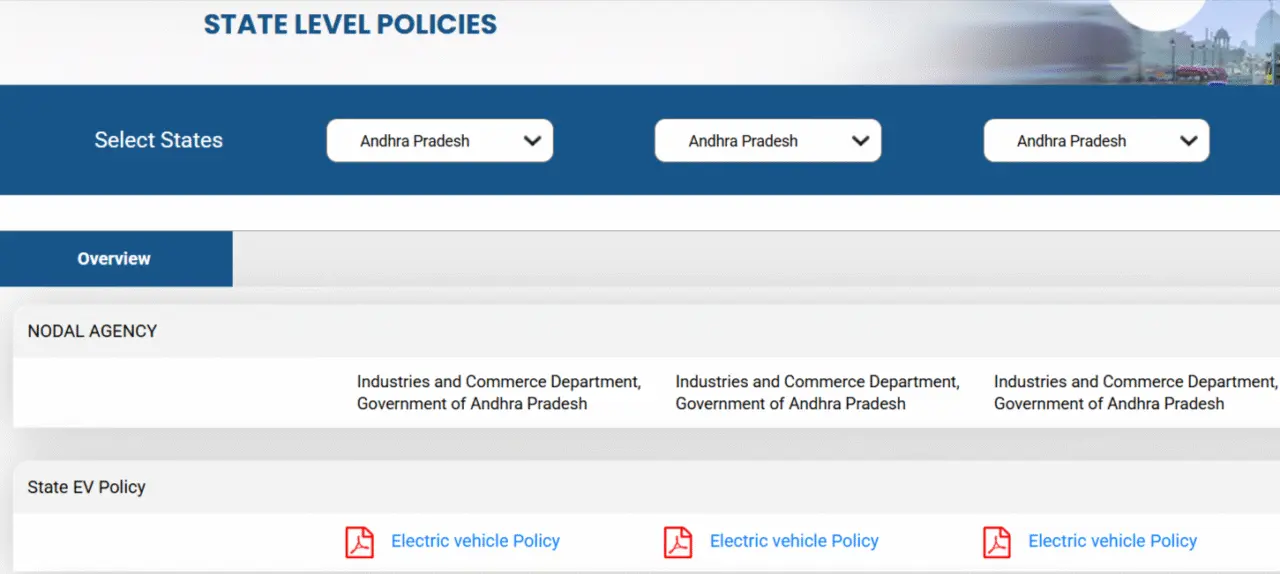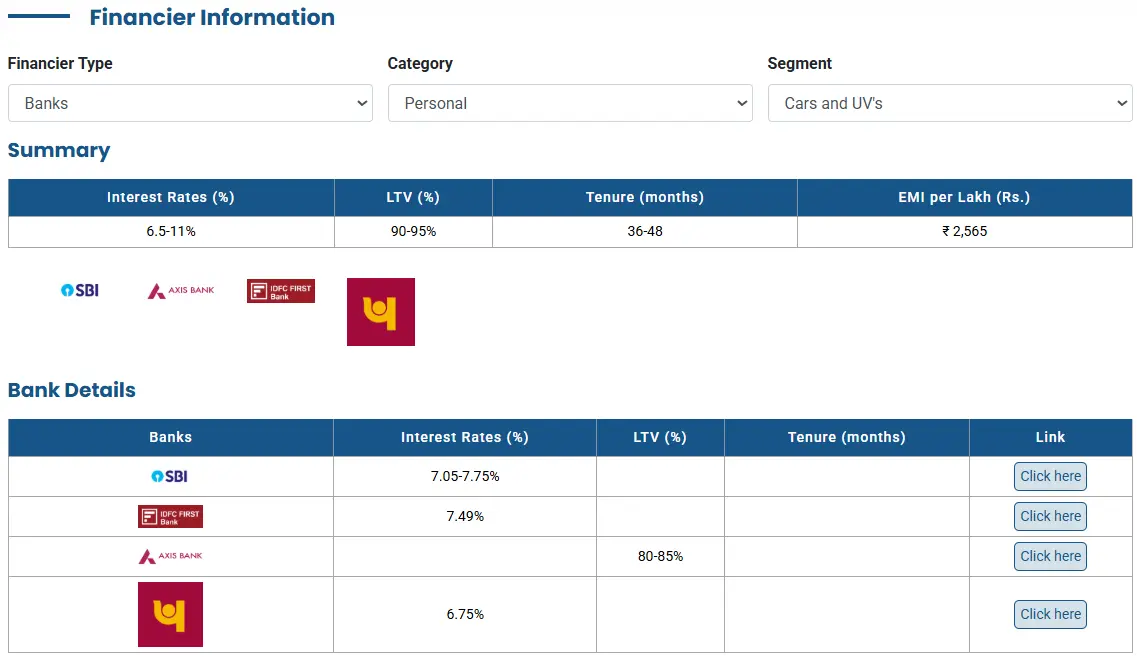If you are planning to buy an electric vehicle in 2025, you might be eligible to get several benefits under the EV subsidy scheme in your state! You can apply online for electric vehicle subsidy scheme in your state and get financial discounts in form of upfront cost of vehicle, registration cost, taxes, tolls etc.
In this article, we are telling you the complete details about electric vehicle subsidy schemes 2025 being run by the several state governments and how to apply online to get the subsidy benefits if you are planning to buy an EV such as electric bike, scooters, or car. EV subsidy scheme helps you save money and also keeps the air clean because electric vehicles don’t make smoke like petrol or diesel ones. If you want to get this benefit, you just need to buy an electric vehicle and apply for the subsidy with the right documents.
Also Read – PM E Drive Scheme
How to Apply for Electric Vehicles Subsidy Schemes in India
For most of the cases, you don’t need to apply separately for the EV subsidy scheme in any state, the whole process is either managed by the car manufacturer / dealer or the RTO department of the concerned department.
You just need to provide the right and required documents to the car dealership or the RTO department. Below is the step by step process you can follow to apply for EV subsidy scheme in your state.
STEP 1: Buy an electric vehicle (EV) that is approved under the FAME-II scheme or your state EV policy. You can ask the dealer if the vehicle is eligible for subsidy.
STEP 2: While buying, the dealer will usually reduce the subsidy amount from the total cost. So, you get the benefit directly at the time of purchase.
STEP 3: Share your documents with the dealer – like Aadhaar card, PAN card, and bank details. The dealer applies for the subsidy on your behalf with the government portal.
STEP 4: In some states, you can also apply for state-level subsidy separately by visiting the state EV policy website (like Delhi EV Portal or Haryana EV site).
STEP 5: After approval, the subsidy is either given to the dealer (already deducted from your price) or transferred to your bank account by the government.
Main Highlights of the Electric Vehicle Subsidy Scheme 2025
| Feature | Details |
|---|---|
| Scheme Name | Electric Vehicle Subsidy Scheme |
| Purpose | To make electric vehicles affordable and promote clean transport |
| Who Can Apply | Any individual or company buying an electric vehicle in India |
| Type of Vehicles Covered | Electric two-wheelers, three-wheelers, and four-wheelers |
| Subsidy Amount | Up to ₹15,000 for two-wheelers, ₹1.5 lakh for four-wheelers (may vary by state) |
| Main Government Schemes | FAME II (Central), State EV Policies (e.g., Delhi, Maharashtra) |
| Where to Apply | Through vehicle dealers or online state EV portals |
| Documents Required | Aadhaar Card, Vehicle Invoice, Bank Details, etc. |
| Benefits | Lower cost, clean environment, fuel savings |
Electric Vehicles Subsidy Amount
Every state offers some incentives to you for adopting electric vehicles. The Subsidy offered on Electric Vehicles as as follow:
| Total Approximate Incentives | Approximate Size of Battery |
|---|---|
| Two wheeler: Rs 15000/- per kWh upto 40% of the cost of Vehicles | Two wheeler: 2 kWh |
| Three wheeler: Rs 10000/- per kWh | Three wheeler: 5 kWh |
| Four wheeler: Rs 10000/- per kWh | Four wheeler: 15 kWh |
| E Buses: Rs 20000/- per kWh | E Buses: 250 kWh |
Documents Required to Claim EV Subsidy
- Proof of identity (Aadhaar card, passport, etc.)
- Proof of address (Utility bills, rental agreement, etc.)
- EV registration details
- Business or government registration (if applicable)
Types of Electric Vehicles in India
- Battery Electric Vehicle (BEV): These vehicles run only on electricity. They do not need petrol or diesel. You charge them like a mobile phone. They are very good for saving fuel and keeping the air clean.
- Hybrid Electric Vehicle (HEV): These cars use both petrol and a small battery. When the battery is empty, the petrol engine helps. But they are not as good as full electric cars.
- Plug-in Hybrid Electric Vehicle (PHEV): These cars also use petrol and battery, but the battery can be charged with a plug, just like a mobile charger. They work better than normal hybrid cars, but not as well as full electric cars.
- Fuel Cell Electric Vehicle (FCEV): These cars make electricity using fuel like hydrogen. They do not use petrol or diesel. They are clean and use special fuel to run.

Which Vehicles Are Eligible?
- Electric two-wheeler (e-2Ws)
- Electric three-wheeler (e-3Ws), like e-rickshaws and e-carts
- Electric ambulances
- Electric trucks
- Electric buses
- Charging infrastructure setup
- Improvement of testing agencies for EVs
Benefits of Electric Vehicles
No noise pollution : Electric vehicles don’t make loud engine noise, so roads are more peaceful.
Lower running costs : Electric vehicles cost less money to drive every day than petrol or diesel vehicles.
Low maintenance cost : They don’t need much repair because they have fewer moving parts.
Zero Tailpipe Emissions : Electric vehicles don’t release any smoke from the back, so they keep the air clean.
Tax and financial benefits : The government gives you money back or reduces tax if you buy an electric vehicle.
Petrol and diesel use is destroying our planet : Using petrol and diesel makes dirty air and harms nature.
Electric Vehicles are easy to drive and quiet : They are smooth to drive and make almost no sound while moving.
Convenience of charging at home :You can charge them at home like charging a mobile phone.
State Wise Electric Vehicles Subsidy Scheme Policy
Step 1: Go to the e-Amrit official website, https://e-amrit.niti.gov.in
Step 2: At the homepage of the website, you will see the “Electric Vehicles Incentive” under the “Going Electric”

Step 3: Now next you have seen the “State Level Policies” in which you have to select the “State”

Electric Car Loan Interest Rate
To check the electric car loan interest rate, follow the following process
Step 1: Go to the e-Amrit official website https://e-amrit.niti.gov.in and click on “Going Electric” and you will see the Financier Information tap

FAQs
What is an Electric Vehicle?
An electric vehicle (EV) is a vehicle that is powered by an electric motor and a battery, which can be recharged by plugging it into a fast-charging socket and a standard electrical socket as well.
How do I know which electric car is right for me?
Electric vehicles are quickly becoming an affordable option for everyone. Moreover, the central/state government provides an upfront subsidy that further reduces the overall costs. The choose my EV selector tool will help you to look for an electric vehicle to cater to your requirements.
How do I plan longer trips for electric vehicles?
Planning longer trips with your electric vehicle is as comfortable as with any conventional vehicle. When you need to charge while on the road, you’ll find 934 stations in India available to the public. The number is steadily increasing with new devices getting installed by different players, both public and private players.
How do I know the battery needs replacement?
When you start your car with a low battery, you may notice that the engine spins over slowly than usual and that the dash lights flicker or dim. Even if the battery is completely charged after driving, this can happen.
